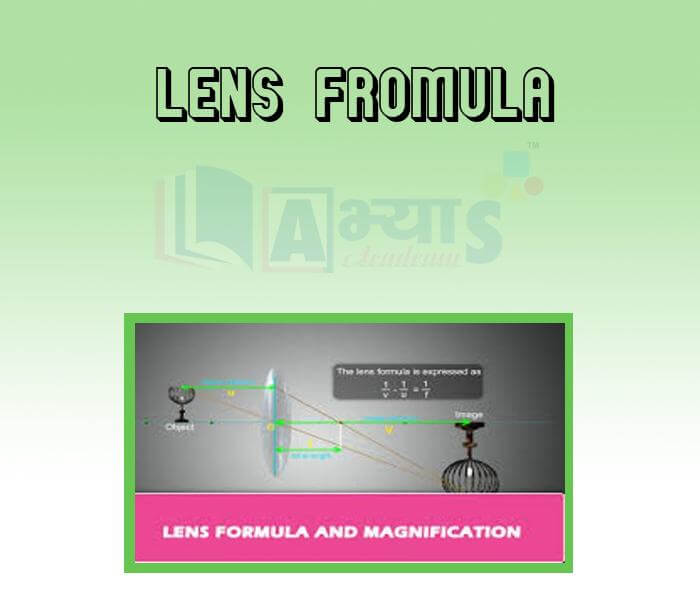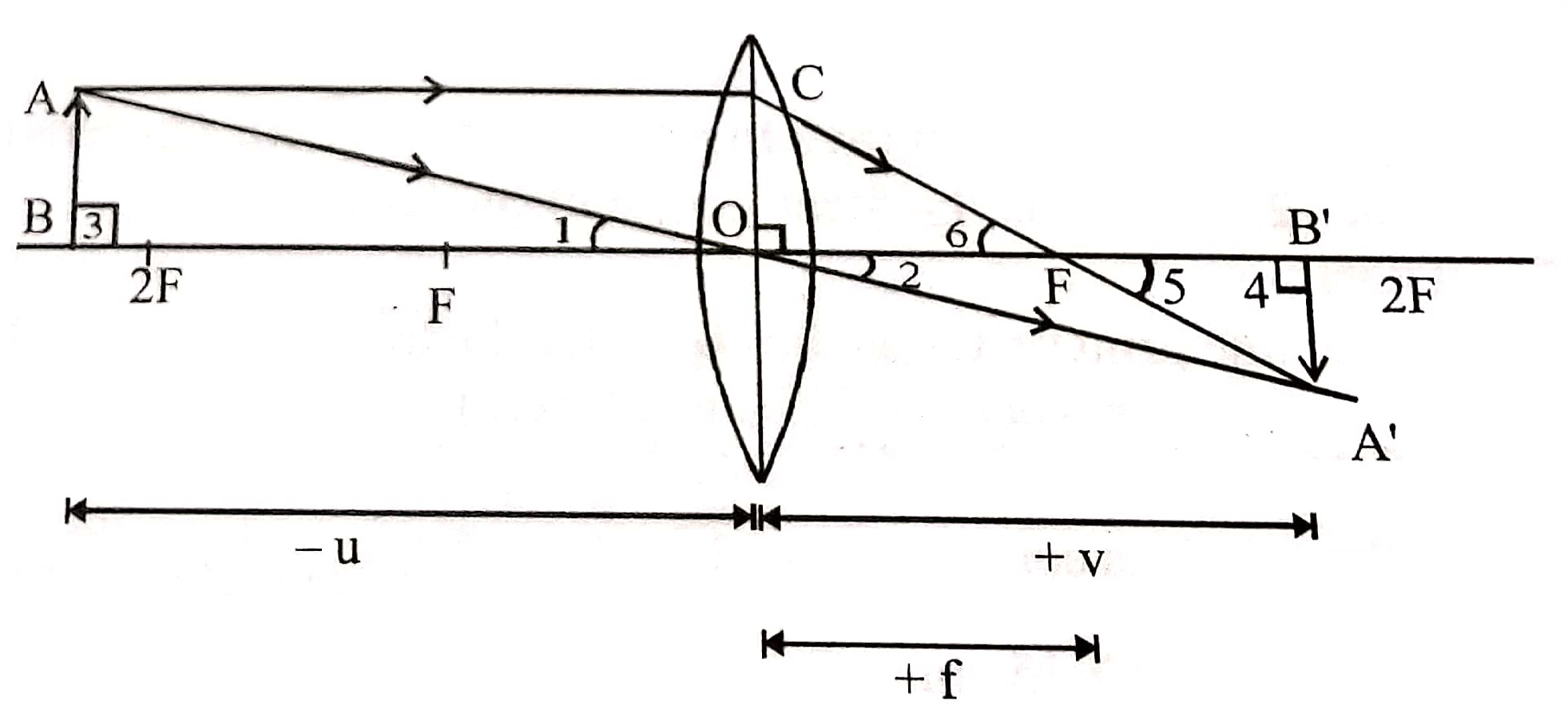Lens Formula











Lens Formula
If we place an object at a distance u from the optical centre 'O' and its image is formed at a distance v then
This relationship is known as lens formula. Here f is the focal length of this lens.
Proof:
Consider an object AB placed beyond 2F in front of a convex lens. On the other side of lens an image is formed between F and 2F which is real, inverted and smaller in size. Applying the sign conventions :
Object distance (OB ):= -u
Image distance(OB') := v
Focal length(OF): = +f

In and
=
( vertically opposite angle)
=
( each
)
(By AA similarity)
Therefore, and
are equi-angular and hence they are similar.
............[ 1 ]
Now and
=
( vertically opposite angle)
=
( each
)
(By AA similarity)
Therefore, and
are equi-angular and hence they are similar.
In particular ,
But OC = AB
Since all distances are measured from optical centre , therefore,
...........[ 2 ]
Now comparing eq. (1) and (2),
Dividing both the sides by uvf,
Hence the Lens formula
Similarly we can prove the lens formula for a concave lens.
Illustration: An object is placed 30 cm from a convex lens. A real image is formed 20 cm from the lens. Find the focal length of the lens.
Solution: By convention, the object is placed to the left of the lens. Hence, u is negative. Since the image is real, the transmitted rays actually intersect. The image is thus formed on the right of the lens as shown in figure.

Hence, v is positive. Thus,
u = - 30 cm and v = + 20 cm.
From the lens equation we have,
or f = 12 cm.
Hence the focal length is 12 cm.
Lens formula is given as ? | |||
| Right Option : A | |||
| View Explanation | |||
In the lens f' stands for ._____________. | |||
| Right Option : A | |||
| View Explanation | |||
Which of the following are correct ? (a) The lens formula u stands for object distance . (b) The lens formula v stands for image distance . (c) The lens formula f stands for focal length. | |||
| Right Option : D | |||
| View Explanation | |||
Students / Parents Reviews [10]
My experience with Abhyas is very good. I have learnt many things here like vedic maths and reasoning also. Teachers here first take our doubts and then there are assignments to verify our weak points.

Shivam Rana
7thMy experience was very good with Abhyas academy. I am studying here from 6th class and I am satisfied by its results in my life. I improved a lot here ahead of school syllabus.

Ayan Ghosh
8thA marvelous experience with Abhyas. I am glad to share that my ward has achieved more than enough at the Ambala ABHYAS centre. Years have passed on and more and more he has gained. May the centre flourish and develop day by day by the grace of God.

Archit Segal
7thMy experience with Abhyas academy is very good. I did not think that my every subject coming here will be so strong. The main thing is that the online tests had made me learn here more things.

Hiya Gupta
8thOne of the best institutes to develope a child interest in studies.Provides SST and English knowledge also unlike other institutes. Teachers are co operative and friendly online tests andPPT develope practical knowledge also.

Aman Kumar Shrivastava
10thAbout Abhyas metholodology the teachers are very nice and hardworking toward students.The Centre Head Mrs Anu Sethi is also a brilliant teacher.Abhyas has taught me how to overcome problems and has always taken my doubts and suppoeted me.

Shreya Shrivastava
8thI have spent a wonderful time in Abhyas academy. It has made my reasoning more apt, English more stronger and Maths an interesting subject for me. It has given me a habbit of self studying

Yatharthi Sharma
10thIt has a great methodology. Students here can get analysis to their test quickly.We can learn easily through PPTs and the testing methods are good. We know that where we have to practice

Barkha Arora
10thAbhyas Methodology is very good. It is based on according to student and each child manages accordingly to its properly. Methodology has improved the abilities of students to shine them in future.

Manish Kumar
10thIt was a good experience with Abhyas Academy. I even faced problems in starting but slowly and steadily overcomed. Especially reasoning classes helped me a lot.
